Table of Contents
Commercial construction projects refer to structures suitable for business or commercial use. Common commercial construction projects include grocery stores, hotels and lodging facilities, industrial buildings like factories and warehouses, medical facilities, office buildings, restaurants, shopping malls, and sports facilities.
Commercial construction work depends on the contract’s value and the project’s scope. It is common to see commercial general contractors and developers bidding on a variety of contracts—from new commercial construction and commercial building remodeling to a wide range of infrastructure projects.
While revitalization of an existing building may need less material and labor, construction of a new commercial building may vary widely by the cost and scope of work. Similarly, the construction requirements differ for commercial remodeling and modular commercial construction.
Do you want to explore commercial construction projects in detail? Read on.
What is a Commercial Construction Project?
A commercial construction project is a private construction project undertaken to earn profit by leasing or selling a property/properties. An industrial construction project or commercial project requires hands-on building experience, skilled professionals, and technical know-how.
In addition, the successful delivery of a commercial project hinges on internal and external collaboration, with strong trade partner relationships.
Unlike a greenfield project (example: commercial office construction) that requires construction from a clean slate, a brownfield project (example: commercial office remodeling) involves the reconstruction or redevelopment of an existing structure.
Commercial construction differs from residential construction in several aspects, such as budget, materials, purpose, regulation, size, and stakeholders. Typically, general contractors work with teams comprising architects, engineers, project managers, subcontractors, and other construction professionals.
Coordinating a commercial construction project is also challenging, with different equipment needs, job site sizes, stakeholders, a higher volume of materials, and more.
Check out this post on new construction to learn more about the commercial construction process.
What are the Three Types of Construction?
Commercial construction offers versatile construction work opportunities for commercial contractors, construction managers, and many more construction professionals. A commercial building contractor or a commercial construction firm is engaged primarily for commercial construction and renovation.
Broadly speaking, there are three types of construction:
Federal Construction: Federal construction projects are similar to state projects. The ownership of the project site rather than the entity that funds the construction makes it a state or a federal project. Examples are courthouses and government buildings.
Private Construction: As part of private construction, commercial construction involves the construction of any building or structure for commercial or residential purposes—from apartment complexes and schools to restaurants and shopping centers.
State Construction: State construction projects are commissioned or funded by a city, municipality, or a government entity. Examples are the construction of a bridge and a sewer line.
What are the Levels of Commercial Construction?
Usually, commercial construction includes medium- or large-scale projects while small-scale commercial construction involves working on projects that demand less crew members, equipment, and time.
The three prominent scales of commercial construction are:
Small-scale: Also known as “light commercial construction,” small-scale construction covers building repairs, home renovations, and office space redesigns that focus on rebranding or changing the look of a structure. Such “facelift” jobs are less costly with minimum labor requirements.
Medium-scale: Medium-scale construction involves remodeling commercial buildings, building additional structures or expansions, restructuring, upgrading, and more. Such projects (water parks, shopping malls, etc.) are more complex and take more time and effort than small-scale projects.
Large-scale: Generally, large-scale construction involves building from the ground up to create a new structure based on a unique vision. Such commercial buildings include:
- Airports
- Community retail centers
- Government buildings
- High-rise buildings (skyscrapers)
- Hospitals
- Hotels
- Multi-family residences
- Office buildings
- Roads
- Shopping centers/Strip malls
While commercial construction companies and government agencies fund large-scale “megaprojects,” it is common for such projects to use heavy equipment and have large teams and longer project schedules.
How are Commercial Construction Projects Classified?
Generally, commercial construction projects represent four major classifications:
Design-to-suit: Also known as “fit-outs,” design-to-suit projects typically work for leased or rental spaces wherein clients wish to update spaces and modify them to their needs.
Expansions: For example, a business owner may engage contractors to conduct the expansion of their space to provide more room to operate. Contractors are required to carry out expansion work with minimum disruption to business operations.
While a client may want fresher and updated aesthetics for a renovation project like office building renovation, an expansion may focus on constructing and fitting out the additional space without disrupting regular business operations.
Out-of-the-ground: Also known as “new construction,” out-of-the-ground construction involves any work that starts from ground zero. Significant challenges of new builds are the design and construction of buildings.
Renovations: Also known as “retro-fits” or “retrofittings,” renovation projects improve an existing structure and accommodate various needs, such as modernizing the look of a building or facility and choosing green or eco-friendly renovation ways for homes and businesses, etc.
Track Latest Construction Projects Across the World Unlock the Next Big Project!
Common Types of Commercial Construction Projects/Buildings
Commercial real estate construction spans a wide spectrum of buildings. Commercial building projects exist in a variety of shapes, specifications, and sizes—from stand-alone buildings to multi-story structures. Rules and regulations also differ greatly for each construction project.
In addition, the type of project varies among different clientele who may have distinct requirements—such as constructing a new commercial building to be used as retail space or extensions for a parking garage.
As famously said, “We shape our buildings. Thereafter, they shape us.”
The most common types of commercial construction buildings include:
Agriculture and Forestry Buildings
Data Centers
Institutional
Educational Buildings
- Colleges/Universities
- Schools
Healthcare Buildings
- Clinics
- Hospitals
Research Facilities
- Laboratories
Institutional Buildings
- Administrative/Government buildings
- Banking and financial institutions
- Fire stations
- Libraries
- Monuments
- Museums and other institutional buildings
Leisure and Hospitality Buildings
Primary buildings under this category consist of:
- Amusement facilities
- Cinemas
- Hotels
- Motels
Office Buildings
Outdoor Leisure Facilities
- Athletic and sports fields
- Golf courses
- Outdoor ice rinks
- Parks and playgrounds
Public Buildings
- Churches
- Mosques
- Temples and other public buildings
Retail Buildings
- Garages and service stations
- Retail halls
- Shopping centers
Transportation and Storage Buildings
- Bus terminals
- Cold storage plants
- Parking facilities
- Truck terminals
- Warehouses
Let us look at some of the commercial buildings in detail:
Banking and Financial Institutions
Construction of a banking or a financial institution should prioritize the safety of bank workers and financial assets like currency and documents.
Entertainment Facilities
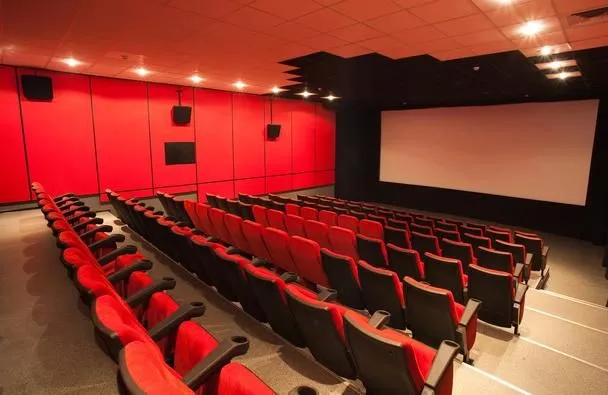
Entertainment facilities comprise concert venues, movie theaters, museums, performing arts centers, wedding venues, and more. Apart from the functional aspects of an entertainment space, other key factors for entertainment facility construction range from aesthetics and acoustics to creative appeal and customer experience.
Grocery and Retail Stores
With respect to a grocery store, a contractor is responsible for constructing an attractive building with a welcoming appearance inside and outside the establishment. As a grocery store is subject to high traffic, the building layout should facilitate the fluid movement of people.
While constructing or renovating a grocery/retail store, the overall layout of the building plays a central role in ensuring fluid movement inside and a welcoming look from the outside.
Hotels and Lodging Facilities
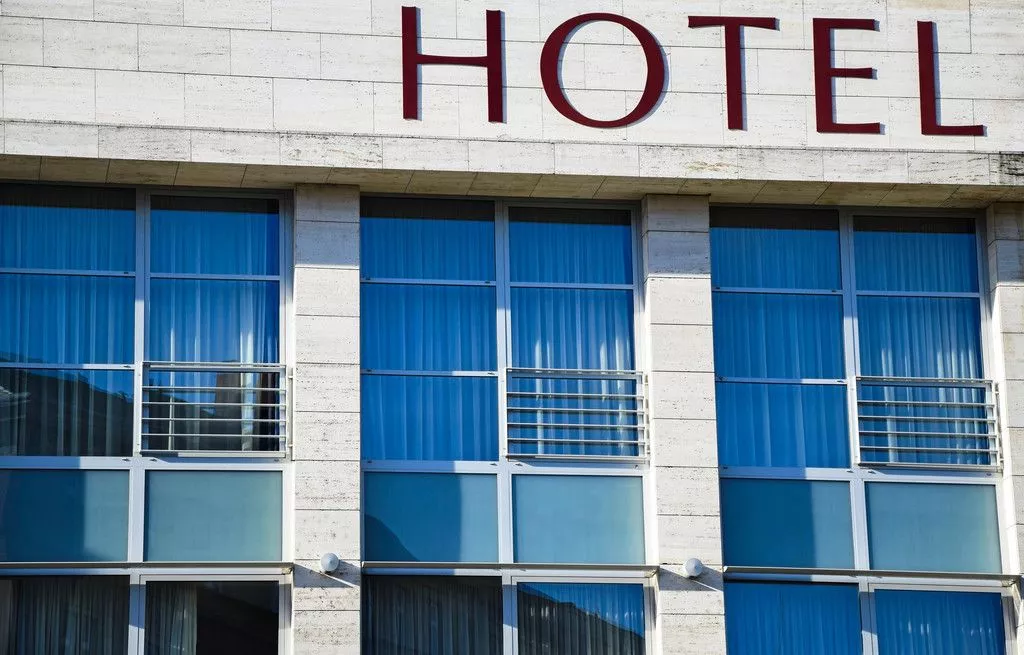
Hospitality and retail construction projects often reflect corporate branding in the design, which also accommodates aesthetically attractive features to attract and retain customers.
The construction of leisure and hospitality buildings—especially in the hotel and motel industry—emphasizes ease of access, level of comfort, the privacy of guests, and soundproofing, among other factors.
For example, hotel construction demands the inclusion of amenities, such as dining areas, fitness centers, and pools, which need to be planned for comfort, long-term durability, and usability. Moreover, every public area should be covered by security cameras.
Industrial Buildings
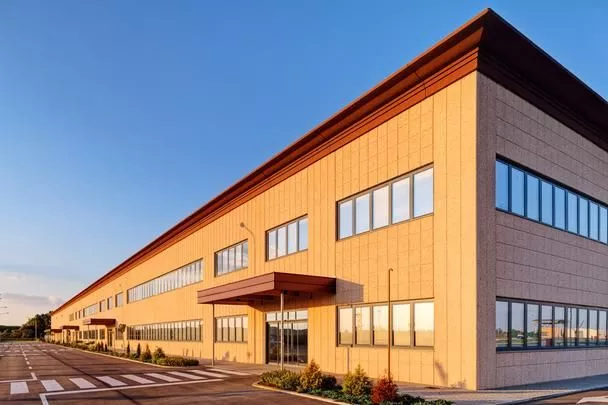
Industrial structures, such as factories and warehouses, may have specific building requirements to accommodate heavy equipment, ensure worker safety, store raw materials, etc. In addition, industrial facilities need raised ceiling heights, spacious rooms with good ventilation, and shipping docks.
A large-scale manufacturing plant or similar industrial facility relies on process engineering expertise.
From manufacturing and logistics equipment to equipment stations and safety equipment (such as first aid stations and fire suppression systems), industrial building needs vary widely and, therefore, require a specialized team of construction professionals.
Track Latest Construction Projects Across the World Unlock the Next Big Project!
Medical Facilities
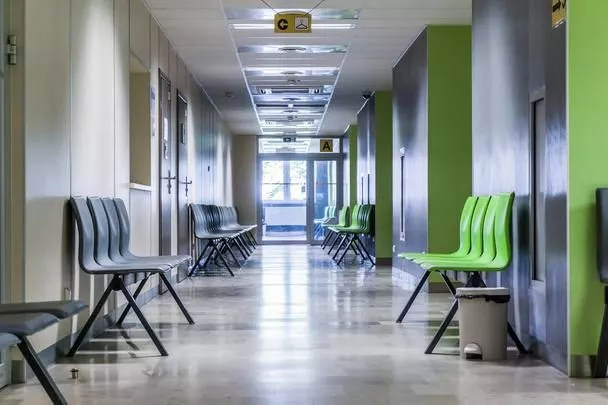
Medical facilities include:
- Animal care clinics
- Community clinics
- Diagnostic centers
- Hospitals
- Laboratories
- Physical therapy centers
- Rehabilitation centers
A healthcare establishment/ medical facility demands an ample and comfortable space for patients, medical personnel, visitors, as well as convenient accommodation for essential equipment.
Electrical and plumbing configurations and patient/personnel/equipment movement are key factors in developing medical facilities. Therefore, medical facility planning focuses on providing maximum accessibility, accommodating a broad range of equipment, ensuring flexible navigation, etc.
Office Buildings
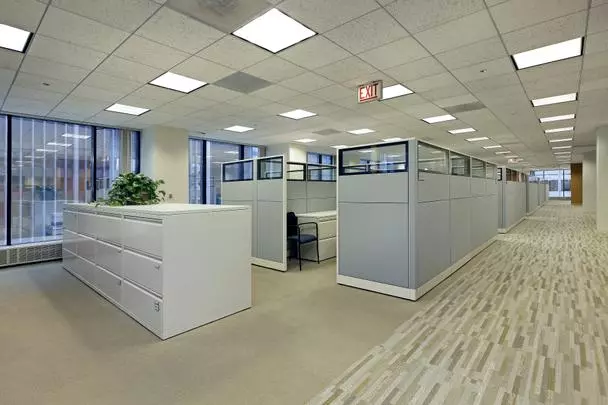
Office buildings constitute a diverse category of commercial construction projects—from small business office spaces to corporation-owned skyscrapers. An office can be a single-use space or used by multiple businesses.
As each office space is unique in terms of facilities and requirements, a cookie-cutter approach does not work in constructing an office building. This is why office building contractors should allow for elements that go beyond basic construction necessities like bathrooms and fire escapes.
From water metering to emergency exits, the office construction layout should include everything for employees to work comfortably and interact with clients in a safe and secure manner.
Furthermore, an office’s computer equipment and servers should be protected from electrical problems. The construction should be such that utilities and network cables are seamlessly connected to devices.
Restaurants
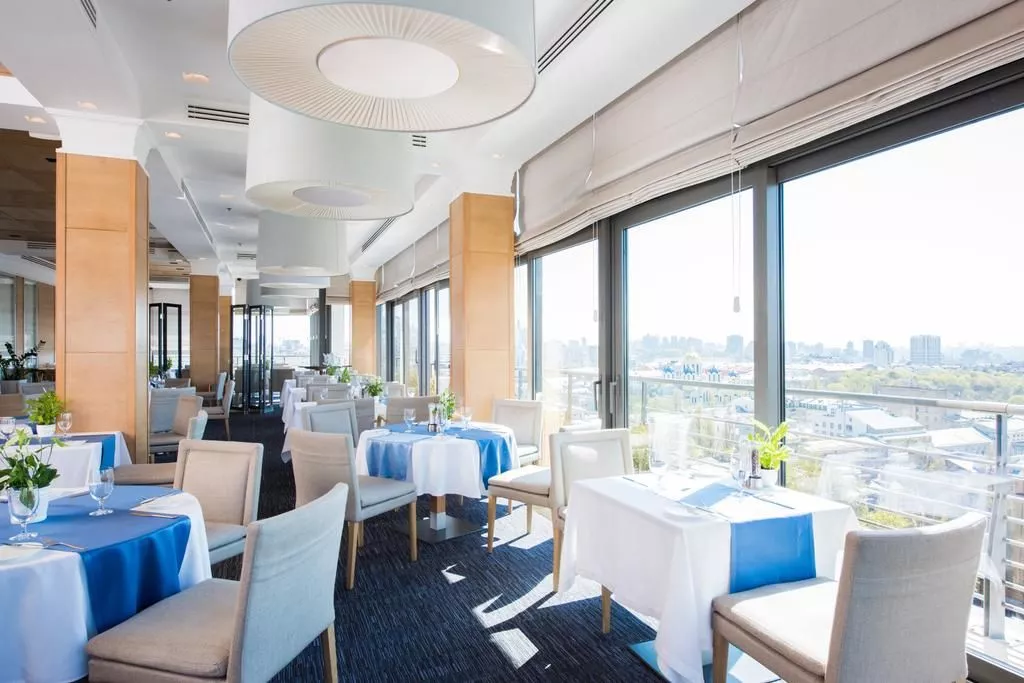
Food & Beverage (F&B) establishments/restaurants go beyond “eating and drinking” locations with tables and chairs. Restaurants typically have the front of house (FOH) for customers and the back of house (BOH) for employees. While the FOH often has a dining area, waiting area, and a station for the host, the BOH usually has the kitchen, a dishwashing station, and food storage areas.
Restaurant owners want to create an inviting ambiance for customers to interact with one another. The clients for this commercial construction project need a professional-grade kitchen, too, to facilitate restaurant operations and attract diverse clientele to their uniquely built restaurants.
Restaurant construction has to be planned meticulously to meet food and fire safety laws and building code regulations. While constructing a restaurant, contractors need to take special care to maintain the look and feel of the building and accommodate refrigeration space, lighting fixtures, and so on.
Furthermore, customer comfort and employee safety must be kept in mind.
Schools and Universities
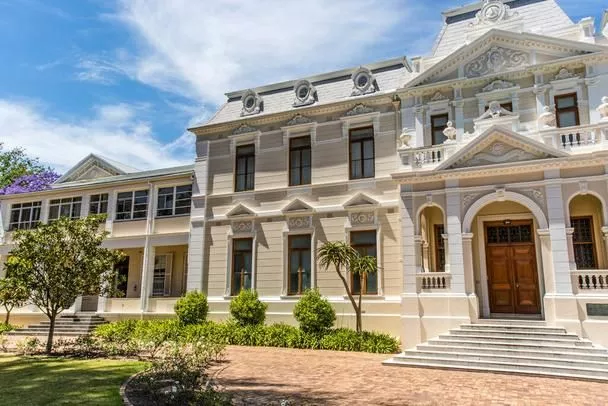
Higher education commercial construction represents a two-fold challenge because a university has school-like facilities (including classrooms, offices, food service facilities, and sports facilities) and also dorms/dormitories constructed like high-rise condominiums or hotels.
Sports Facilities
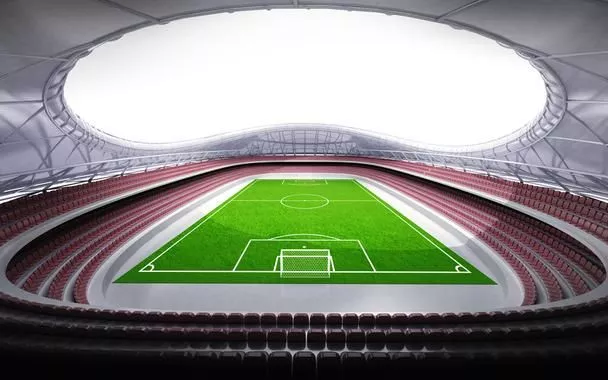
Sports facilities include high school basketball courts, professional football stadiums, and other playing areas. Such facilities often have custom-designed aluminum bench seating, elevated bleachers, heavy athletic equipment, and additional features with particular attention to the comfort and safety of players and spectators.
Other Commercial Structures
Accessibility, safety, and security are crucial to constructing structures like parking garages. Furthermore, a preferred appearance of the garage may influence the design and construction aspects of such projects.
Wrapping Up
The fast-paced commercial construction industry thrives on comprehensive construction know-how in planning, developing, and maintaining buildings worthy of commercial use. A commercial construction contractor or a commercial construction company has the expertise to work on diverse projects and make a meaningful impact on people’s lives.
Commercial construction services deal with construction budgets, schedules, and quality standards. Moreover, specialty construction services cater to specific buildings like a prefab commercial building or a pre-engineered steel building.
Preparing pre- and post-construction project checklists before pursuing a commercial construction job helps in adhering to a timeline and staying on budget.
In addition, it is necessary to consider legal permits and requirements, including applicable building permits and zoning codes to construct sustainable commercial buildings.
A commercial construction project takes a lot of effort and expertise from breaking ground to completion. No matter what commercial structure you build, the commercial construction industry offers plenty of room for growth.
Stay Updated on Latest Construction Projects Across the Globe!
Subscribe to Global Construction Projects Database to get access to:
- Reliable and high-quality insights
- Upcoming, in-progress, and completed construction
- EPC projects
- Essential details on key stakeholder contact information
- Timely updates
Start a free demo to take your business to the next level!



![List of Top 5 Largest Construction Companies in Portugal [2025]](https://images.blackridgeresearch.com/zA7C1E09-z4Uj64Eb0zfkw/2b549578-fd97-4e1a-6ee2-9094c80f6400/public)




Leave a Comment
We love hearing from our readers and value your feedback. If you have any questions or comments about our content, feel free to leave a comment below.
We read every comment and do our best to respond to them all.